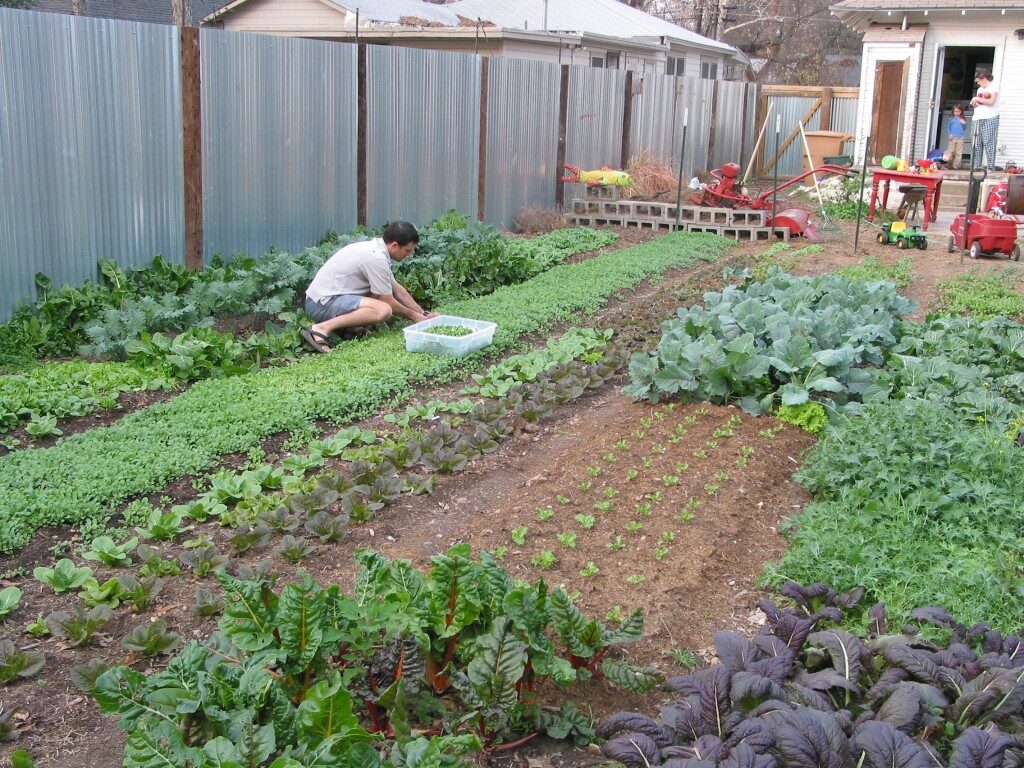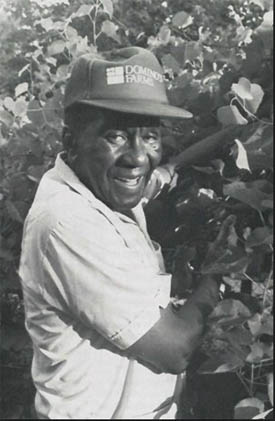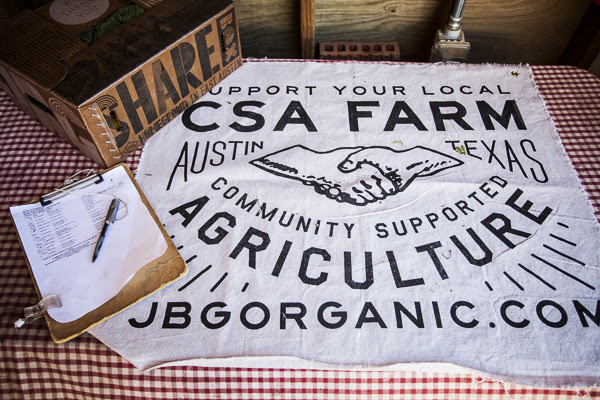
A BRIEF HISTORY OF CSAS IN THE UNITED STATES
01/29/21 — Ada Broussard
In 2004, Brenton Johnson grew the biggest backyard garden of his life. This garden, in fact, overtook his front, side, and back yards. Initially, Brenton sold the first official JBG produce at SFC’s Downtown Farmer’s Market, but soon after that, Brenton started our CSA Program. The neighbors, after all, were curious and wanted to know how they could sample some of the produce they had been admiring from the Holly Street sidewalk. This early iteration of our CSA had just 30 members, and its origins inspired our farm’s name as well as our nearly 17-year CSA history! But, where did CSA Programs, themselves, originate?
![]()
The earliest roots of CSA Programs in the United States can be traced back to Dr. Booker T. Whatley (pictured below), a horticulturist, author, and professor at Tuskeegee University in Alabama. In addition to advances in the field of regenerative agriculture, horticulture, plant breeding, cover cropping (and so much more), Whatley published what he called the “10 commandments” for a successful farming enterprise. One such commandment was the idea of a “Clientele Membership Club” in which members paid upfront for a portion of a farmer’s harvest. By signing up members at the beginning of a season, farmers are able to pay for necessary season-starters like seeds and equipment…. without having to take out a loan from a bank. Sound familiar? Whatley’s model included options for Pick-Your-Own memberships, and both the CSA and Pick Your Own movements of today can thank Whatley for his ingenuity in the 1960’s and 70’s.
![]() Booker T. Whatley
Booker T. Whatley
After graduating from Alabama A&M University with a B.S. in agriculture, Whatley was drafted into the Army during the Korean War where he traveled to Japan and managed a hydroponic farm that was established to feed the U.S. troops in the area. In 1957, Whatley finished his service and enrolled at Rutgers University where he earned a doctorate in horticulture. (In 1989 he earned a law degree from Alabama A&M, as well). At around the same time Whatley was developing his Clientele Membership model, women in Japan founded the Teikei system - another cooperative-based system that connected farmers directly with consumers. During this same period, farm cooperatives and mutually-supportive systems of agriculture were gaining popularity in Europe, largely influenced by Rudolph Steiner’s writings on the subject.
In 1986, a farm in Massachusetts called Indian Line Farm was established as well as one in New Hampshire called Temple-Wilton Community Farm, both of which used the term CSA, or Community Supported Agriculture, for the first time. Many cite these two farms and their European influence as the origins of the CSA Model in the United States, an attribution that grossly overshadows Whatley’s contributions and ingenuity which blossomed years before. Sadly, this overshadowing is a common theme for BIPOC farmers in our country. It should be no surprise that we’re superfans of the CSA Model, and we aim to shed some light on the true history of this farming model. And maybe we’re the only ones who geek out on the history of CSA models? The remarkability of Dr. Booker T. Whatley is hard to deny, however. We’re looking forward to a bountiful spring, which is almost here. This season, we raise our farm coolers to Whatley - without whom the CSA movement may have not taken off in the United States. If you're a CSA member reading this, we hope you know how genuinely thankful we are for your decision to support our farm and our Community Supported Agriculture program. There are around 100 farm employees and around 200 acres of farmland that are grateful for your support. As always, thanks for reading!
![]()

The earliest roots of CSA Programs in the United States can be traced back to Dr. Booker T. Whatley (pictured below), a horticulturist, author, and professor at Tuskeegee University in Alabama. In addition to advances in the field of regenerative agriculture, horticulture, plant breeding, cover cropping (and so much more), Whatley published what he called the “10 commandments” for a successful farming enterprise. One such commandment was the idea of a “Clientele Membership Club” in which members paid upfront for a portion of a farmer’s harvest. By signing up members at the beginning of a season, farmers are able to pay for necessary season-starters like seeds and equipment…. without having to take out a loan from a bank. Sound familiar? Whatley’s model included options for Pick-Your-Own memberships, and both the CSA and Pick Your Own movements of today can thank Whatley for his ingenuity in the 1960’s and 70’s.
 Booker T. Whatley
Booker T. Whatley
After graduating from Alabama A&M University with a B.S. in agriculture, Whatley was drafted into the Army during the Korean War where he traveled to Japan and managed a hydroponic farm that was established to feed the U.S. troops in the area. In 1957, Whatley finished his service and enrolled at Rutgers University where he earned a doctorate in horticulture. (In 1989 he earned a law degree from Alabama A&M, as well). At around the same time Whatley was developing his Clientele Membership model, women in Japan founded the Teikei system - another cooperative-based system that connected farmers directly with consumers. During this same period, farm cooperatives and mutually-supportive systems of agriculture were gaining popularity in Europe, largely influenced by Rudolph Steiner’s writings on the subject.
In 1986, a farm in Massachusetts called Indian Line Farm was established as well as one in New Hampshire called Temple-Wilton Community Farm, both of which used the term CSA, or Community Supported Agriculture, for the first time. Many cite these two farms and their European influence as the origins of the CSA Model in the United States, an attribution that grossly overshadows Whatley’s contributions and ingenuity which blossomed years before. Sadly, this overshadowing is a common theme for BIPOC farmers in our country. It should be no surprise that we’re superfans of the CSA Model, and we aim to shed some light on the true history of this farming model. And maybe we’re the only ones who geek out on the history of CSA models? The remarkability of Dr. Booker T. Whatley is hard to deny, however. We’re looking forward to a bountiful spring, which is almost here. This season, we raise our farm coolers to Whatley - without whom the CSA movement may have not taken off in the United States. If you're a CSA member reading this, we hope you know how genuinely thankful we are for your decision to support our farm and our Community Supported Agriculture program. There are around 100 farm employees and around 200 acres of farmland that are grateful for your support. As always, thanks for reading!







 0 ITEMS IN CART
0 ITEMS IN CART 

